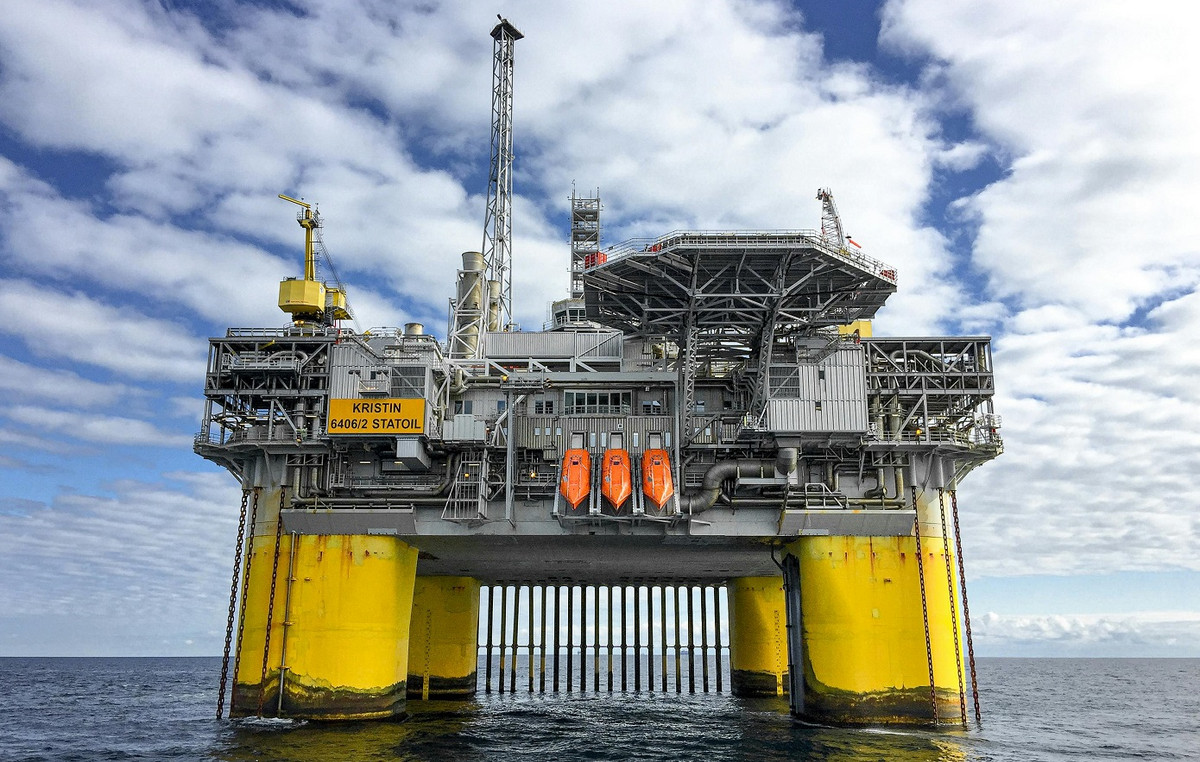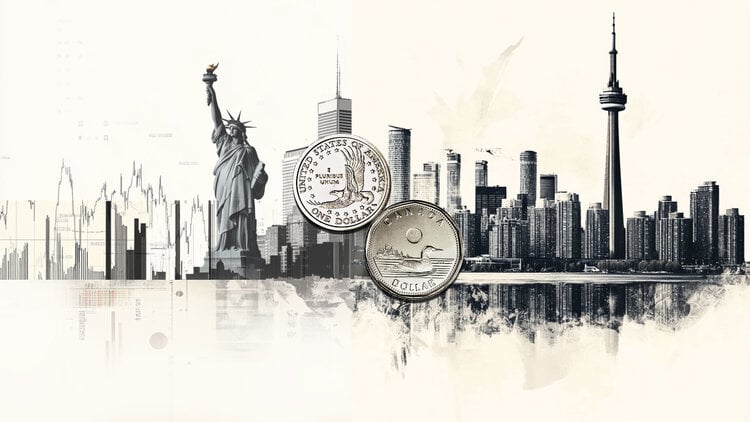In the month of April, which begins this Saturday (1st), the typical autumn weather gains space in Brazil. Hot days, common in March, make room for milder temperatures.
“The days with mild or cold dawns also increase in April due to the climate and in some years there are even episodes of very intense cold. In 1999, for example, it snowed in the beginning of the second half of April due to an intense mass of cold air associated with a powerful cyclone that brought huge surf and damage to the coast of Rio Grande do Sul”, says meteorologist Estael Sias, from MetSul.
The specialist adds that another characteristic of the month of April is the increase in the frequency of days with fog and haze between dawn and morning. The phenomenon occurs as the number of lower temperature dawns grows. On some occasions, the fog can be dense and last for several hours.
Influence of the Pacific Ocean
In the last three years, the climate has been influenced by La Niña with rainfall patterns in different parts of the world. For this year, autumn is likely to suffer the influence of El Niño, which causes unusual warming of the waters of the Pacific Ocean in the equatorial part, which in turn influences the water surface and the climate of other parts of the globe.
In April, a condition of neutrality in the Pacific is foreseen. However, in the East Pacific, a coastal El Niño event is already taking place, with enormous warming of the waters off the coasts of Peru and Ecuador.
The MetSul meteorologist defines April as “mid-season weather”. “March still has many hot days and May tends to register some cold days. Indeed, in spring, September has extremes of cold and heat while October often has very hot days and a high incidence of storms. Thus, April is the month of the year in which the temperature pattern is the least extreme among all the months of the year, ”she says.
According to Estael, very cold or very hot days are much less common than in any other calendar month. Therefore, days with more pleasant temperatures predominate.
Porto Alegre, for example, has historical temperature averages in April that offer great thermal comfort. The average monthly temperature was 20.1°C in the 1961-1990 series and rose to 20.5°C in the normals for the 1991-2020 period. The average minimum in the 1961-1990 series was 16.3ºC, while in the 1991-2020 interval it increased to 16.8ºC. The average maximum in Porto Alegre in the 1961-1990 normals was 25.0ºC and in the 1961-1990 normals it increased to 26.4ºC.
“Thus, April has become warmer in the last 30 years in the capital of Rio Grande do Sul, which follows a trend in much of the world that has become warmer over the last few decades”, details Estael.
Weather in different regions
At the Southeast , April starts with some typical summer rain showers, but as the month progresses, dry weather begins to predominate. Very high temperatures are not expected, especially in the interior of São Paulo and Minas Gerais, where temperatures are slightly below average.
Areas close to the coast in São Paulo and Rio de Janeiro may have above average rainfall due to the greater transport of moisture from the ocean, but, in general, much of the Southeast will have a month of April with precipitation below historical climatology. In April, the rain will be slightly above average in the four states of the Southeast, but the accumulated ones are much smaller compared to the month of March 2023.
Cold air masses of weak to moderate intensity pass through the East of the region bringing temperature drops and inaugurating a typical autumn pattern. On the coastline of São Paulo and Rio de Janeiro, some extreme rainfall events may occur during the passage of cold fronts.
The temperature will be slightly below average in April in the Center North of the state of São Paulo, such as between the regions of São Carlos, Ribeirão Preto, Franca, Barretos, São José do Rio Preto and in the north of the region of Campinas, such as the Triângulo Mineiro to the North of Minas Gerais; within the average from the center of the state of São Paulo to the Northeast of Minas Gerais, passing through the South of Minas Gerais, and above the average from the Southwest of the state of São Paulo to Espírito Santo, passing through the East of Minas Gerais – including the capitals of São Paulo, fluminense and capixaba.
At the North East , it rains a lot in April. Large volumes are expected in the North of the region until May, with a significant decrease in June. Temperatures, especially the maximum, are below average in this period due to persistent cloudiness. In the region, on average it usually rains well from the north of Maranhão to the north of Piauí, and part of the coast of Ceará in the months of March, April and part of May, as well as on the coast of Rio Grande do Norte to the coast of Alagoas and on the coast north and in the capital of Bahia, throughout the autumn.
The month of April should see a lot of rain on the North coast and the East strip of the Northeast, with above-average accumulation in all states, with a strong emphasis on the states of Maranhão, Piauí, Rio Grande do Norte and Ceará, where they will have a lot of precipitation; as well as throughout the month, where the rain increases and becomes much more voluminous on the coast of Bahia, Sergipe, Alagoas and Pernambuco.
Rainfall volumes gradually increase over the South region in April, and a more regular pattern should occur between May and June. Rainfall will have regional variability in Southern Brazil with rainfall below, near and above average depending on the area of each state. Sectors further south of Rio Grande do Sul and north of Paraná have a higher probability of below average rainfall. Points in the east of Santa Catarina and in the northern half of Rio Grande do Sul have a higher chance of rain than average.
The month will be rainy in the North country, mainly in Pará and Tocantins, where volumes are above average. The temperature follows this trend, remaining below average in these areas, due to persistent rain, but maintaining a muggy weather condition. In other areas, the temperature rises during autumn and is above average in Amazonas, Roraima, Rondônia and Acre.
In April, typical summer rain showers still occur between the north of Mato Grosso and Goiás. In the second half of the month, days with firm weather predominate. The temperature is slightly below the average between the East of Mato Grosso, Goiás and the Federal District.
“There is a reasonable consensus among climate models that this month will not be marked by large extremes. What the data show is a tendency for days with pleasant temperatures to predominate, which does not prevent some days from being hot”, says the meteorologist.
In Central Brazil, the trend is for temperatures above to much above the average, reflected in many areas of the Southeast and Midwest. Thus, a month is expected with temperatures above historical standards in much of the Center-South region of Brazil.
Distribution of rainfall in the first fortnight
The first half of April presents different patterns of rain between regions.
The Center-North of the country can present significant accumulated rainfall, which can exceed 100 mm. On the coast of São Paulo and Paraná, in addition to the west of Rio Grande do Sul, accumulated rainfall that can reach 70 mm is forecast. In areas of the interior of the Northeast, much of the Southeast and Midwest, low accumulated rainfall is forecast, with totals below 30 mm.
For the North Region, rainfall volumes greater than 70 mm are forecast in practically the entire region, with the exception of the central areas of Pará, eastern Amazonas and Tocantins, where total rainfall can exceed 100 mm. In the Northeast region, the largest volumes of rain will be concentrated in areas of Maranhão, Piauí, Ceará, Rio Grande do Norte, Paraíba and Pernambuco and may exceed 100 mm. In other areas, rainfall totals will be lower and should not exceed 60 mm.
In the Central-West Region, there is a forecast of accumulated heavy rain in much of Mato Grosso. In general, rainfall totals may vary between 60 and 90 mm. In the other areas, little rainfall is expected with values below 40 mm. In the Southeast Region, the highest accumulated rainfall may occur on the coast of São Paulo and Rio de Janeiro, and may exceed 70 mm. In other areas, rainfall volumes should not exceed 60 mm.
In the South Region, the highest accumulated rainfall is forecast for the East of Paraná and Santa Catarina, in addition to the Northwest and coast of Rio Grande do Sul, with volumes reaching 70 mm. In other areas, accumulated rainfall may vary between 10 and 30 mm.
(With information from MetSul, Climatempo and the National Institute for Space Research)
Source: CNN Brasil
I’m James Harper, a highly experienced and accomplished news writer for World Stock Market. I have been writing in the Politics section of the website for over five years, providing readers with up-to-date and insightful information about current events in politics. My work is widely read and respected by many industry professionals as well as laymen.







